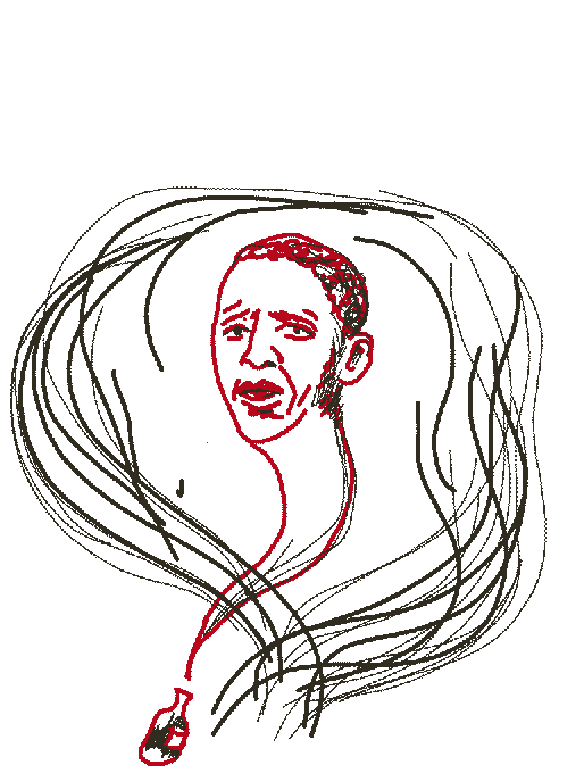Story highlights
When President Barack Obama speaks Tuesday night, there will be an empty chair symbolizing lives lost to gun violence
Talking more about suicides may change the focus of the gun control debate by bringing a new group of victims into the discussion
Khary Pennebaker has no memory of his mother. None.
“I don’t remember what she looks like,” he says. “I have no memory of her touch, her smell or what her voice sounded like. I found a letter last year she had written to my father. It was the first time I knew what her handwriting looked like.”
Pennebaker was only 20 months old on the morning of September 8, 1979, when his mother hopped into her car at their Cincinnati home, drove away, pulled off to the side of the road, put a revolver to her head, and pulled the trigger.
In place of memories, other things have filled Pennebaker’s life: anger at his mother that has only recently been ameliorated through counseling, a strained relationship with his father, wariness of holidays like Mother’s Day, and incredible pain and sadness.
In recent years, however, the loss of his mother has driven him to activism on gun control and a desire to tell his story in support of causes such as universal background checks for firearm purchases.
“I don’t blame the gun at all for my mother’s death,” he said in a telephone interview. “I blame her access to it. She had easy access to the gun when she was in the pit of despair.”
When President Barack Obama gives his State of the Union address Tuesday night, there will be an empty chair in the first lady’s box symbolizing lives lost to gun violence. While most people will look at that seat and envision a person’s life snuffed out by a homicide, the majority of those killed in the United States each year by a firearm have, like Pennebaker’s mother, died by their own hands.
READ: Obama to leave seat empty at State of the Union to honor gun violence victims
Quietly, and with little fanfare, gun control advocates are using stories like Pennebaker’s to try to subtly shift the debate over firearms policy by bringing the issue of firearm suicides more and more into the discussion. They hope that broadening the discussion will prompt the public to think about a different set of victims, not just those who are killed in inner-city violence, and that that will lead to broader support for gun control laws.
In years past, gun control advocates focused almost exclusively on homicides, whether the mass shootings covered intensively by the national media or the inner-city murders that are a staple of the late local news. Now, groups such as Everytown for Gun Safety and Moms Demand Action, as well as public health researchers, are starting to emphasize suicides.
The shift is part of a broader change in looking at gun violence as more of a public health issue and less of a matter of crime.
“When criminologists focus on guns, they focus on crime,” said David Hemenway a professor at Harvard University’s T.H. Chan School of Public Health. “What we’ve been trying to say is that a person is dead whether or not someone else shot them, they were shot by accident or they shot themselves on purpose.”
To be sure, the main emphasis by gun control advocates remains squarely on homicide. The dominance of homicide in the discussion was on full display Thursday during Obama’s town hall on gun violence hosted on CNN by Anderson Cooper. Gun related suicides were only raised once during the show, when the President, almost in passing, mentioned that two-thirds of gun deaths are the result of suicides.
Some observers say that talking more about suicides will change the focus of the gun control debate by bringing a new demographic of victims into the discussion. Where often the victims of firearm-related homicide are young black and Hispanic males, nearly 75% of those who use a gun to take their lives are white men, according to the Centers for Disease Control and Prevention.
“From our perspective, it’s trying to break down the common misperception that gun violence only effects so-called bad people,” said Josh Sugarmann, executive director of the Violence Policy Center, a gun control advocacy organization.
Gun rights advocates, however, counter that any shift in emphasis by gun control activists to suicides is happening because the country’s declining homicide rate is robbing them of the argument that the United States is undergoing an epidemic of gun violence. And, they say, looking more at suicides proves the point that the way to save lives is to focus on mental health issues, not restricting firearms.
“If you look at the data and the sheer number of increases in suicides, including suicides carried out by means other than firearms, it is very clear that a solution that would actually save lives is dealing with the mental health issue,” said Jennifer Baker, a spokeswoman for the National Rifle Association. “Gun control is not the answer.”
There are a number of reasons why gun control backers are increasingly bringing firearm-related suicides into the discussion.
For starters, they say you can’t ignore the numbers.
In 2014, the latest year for which complete figures are available, 21,334 people ended their lives using a firearm, an average of more than 58 a day. Altogether, there were 33,599 total gun deaths that year.
While the gun homicide rate has plummeted since the carnage of the 1990s, the number of people who have taken their lives using a gun has barely budged.
Analyzing death certificate data collected by the CDC, the Pew Research Center found gun related homicides have been cut in half, from 7.0 per 100,000 people in 1993 to 3.4 per 100,000 in 2014. By contrast, gun related suicides have fallen during that same period from 7.3 per 100,000 to 6.8 per 100,000.
READ: Why even the gun laws that exist don’t always get enforced
Research conducted by the American Foundation for Suicide Prevention found that in 2014, the states with the highest suicide rates were Montana, Alaska, New Mexico and Wyoming. It happens that these states also had some of the highest rates of gun ownership.
In comparison, states such as New York, Massachusetts, New Jersey and Connecticut, where firearm ownership is relatively low, had the smallest rates of people taking their lives.
“The major difference is the prevalence of firearms,” said Hemenway. “Non-gun suicide rates don’t vary much across states. But gun related suicide rates vary significantly.”
In Montana in 2014, for example, the suicide rate was 23.8 per 100,000 people while in New York, it was 8.1. The states’ gun ownership rates were 67.5% and 22.2% of households, respectively, according to the Violence Policy Center.
One reason, researcher say, is that firearms are a much more efficient way to kill oneself. A Harvard study found that 85% of suicide attempts using a gun resulted in death. Other popular means, such as swallowing pills, were successful less than 5% of the time. And researches say that if a person fails at suicide, the chance of them trying it again is greatly diminished.
Using a gun to attempt suicide, Pennebaker said, “is a permanent solution to what is often a temporary problem.”
In general, veterans have twice the suicide rate of people who have never served in the military. And, perhaps because they are more familiar with firearms, guns tend to be their method of choice. A study in the September 2009 issue of the Journal of Trauma found that 84% of suicides among male veterans involved a firearm. Non-vets used a gun 55% of the time.
Gun rights proponents scoff at such research, asserting that while there may be a correlation, it doesn’t mean causation. Writing in the National Review, Mark Antonio Wright notes that Japan has outlawed guns, and, as a result, has an extremely low homicide rate.
But, he continues, “Japan has one of the highest suicide rates in the world, nearly twice the U.S. rate.”
Beyond the policy implications, some observers say they believe an increased emphasis on gun related suicides has the potential to break the impasse over gun control.
Though polls such as a recent CNN/ORC International survey show strong support for actions such as increased background checks for firearm purchases, there has been a steady erosion in support for gun control in general. Gallop has found that support for making laws covering the sale of firearms “more strict” fell from 78% in the early 1990s to 55% last year.
One reason for the erosion of support may be that fewer people feel that gun control laws will actually work. A 1989 CNN/ORC Poll found the public evenly split on whether stricter gun control laws would reduce violence in the country. By last year, more than 60% told CNN they would not decrease the level of violence.
Some observers note that historically, voters – especially white suburban voters – who tend to favor gun control measures do not consider it a high priority, in part because they see the issue as related to inner-city crime.
“It’s always been the case that about 75% of the public support things like background checks,” said Franklin Zimring, a professor at the University of California, Berkeley law school and a noted expert on criminology. “The problem is they don’t care a lot. Guns are the No. 1 priority of the people who hate gun control, and the No. 32 priority of people who support it.”
Zimring said that by putting the focus on victims who are their relatives and neighbors, gun control advocates hope to get the attention of these “apathetic” suburban voters.
“It’s a politically sophisticated way to change the nature of the debate,” he said. “The point is not to increase the percentage of support, but to increase the intensity of support. It’s not to make more people support gun control. It’s to make them care about it.”






